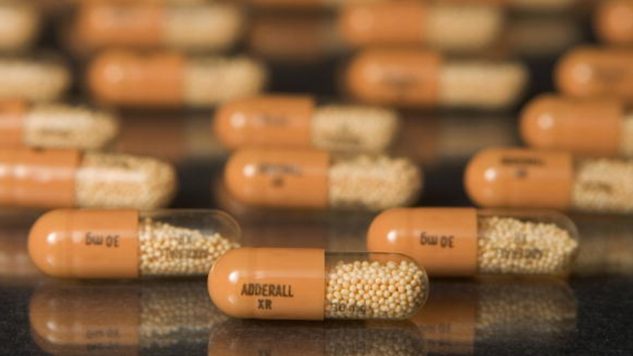Introducing Endless Mode: A New Games & Anime Site from Paste
Note: This series is not meant to diagnose or mollify mental illness or provide medical advice—that responsibility lies with psychiatrists and physicians. The author is not a licensed medical professional.
Last month, we covered the basics of antidepressants and mood stabilizers as well as their most common side effects. Now, we’re wrapping up this series with a rundown on stimulants.
CNS Stimulants
Central nervous system stimulants speed up and liven bodily functions, particularly alertness, attention span and physical activity. They’re most commonly associated with attention deficit disorder, attention deficit-hyperactive disorder and narcolepsy and include drugs like Adderall, Concerta, Focalin, Ritalin and Vyvanse. Even caffeine, the world’s most widely consumed psychoactive drug, is considered a CNS stimulant.
Stimulants’ mechanics vary depending on type. All CNS stimulants increase the levels of dopamine, a neurotransmitter that affects the brain’s movement and attention centers. Some stimulants increase the brain’s levels of serotonin and norepinephrine, which are found in antidepressants, as well.
Stimulants increase learning and thinking ability in people with attention disorders and are infamously used as study aides. Unsurprisingly, nonmedical stimulant use is linked to substance abuse and can lead to problems including hallucinations, aggression and even heart disease. Studies show, however, that children and adolescents who take stimulants for attention disorders (so people who actually need them) are less likely to abuse substances later in life.
If you’ve ever drunk too much coffee, then you’ll have an idea of CNS stimulants’ side effects: some functions, like appetite and sleep, decrease, while others such as anxiety, confidence and lack of inhibition rise. CNS stimulants can also cause trembling, increased heart and breathing rates and dizziness.
Stimulants and Other Mental Illnesses
ADD and ADHD are often coupled with depression, anxiety and bipolar disorder, and stimulants are sometimes used to treat depression, although that practice is waning. Sometimes stimulants and antidepressants are both prescribed, given they don’t interact dangerously. NDRI antidepressants are sometimes prescribed to patients with simultaneous ADHD and depression.
Conflicts
CNS stimulants conflict with certain medications and other substances, especially alcohol. Drugs such as blood pressure medications, beta blockers, seizure medications, prescription pain medications and certain antipsychotics are known to interact negatively with CNS stimulants. If you are taking medication and unsure of whether it conflicts with CNS stimulants, ask your doctor.
Risks of Stimulant Abuse
Dopamine doesn’t just increase attention and movement—it also activates the brain’s reward and pleasure centers, making CNS stimulants highly addictive. In addition to changing one’s behavior, stimulant abuse can wreak major damage to the body including malnutrition, liver, kidney (especially since stimulants are either metabolized through the liver and excreted through the kidneys) and lung damage, strokes and permanent brain and blood vessel damage. Psychologically, stimulant abuse can cause dependency, depression and psychosis.
Sarra Sedghi is Paste Food’s assistant editor. She can usually be found arguing about mayonnaise on Twitter.
